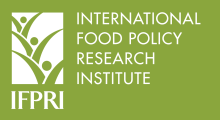Resource information
Farm-level diversification, the adoption of alternative income-generating activities by farm households, is rarely deemed an explicit objective by economists. Where agricultural transformation has occurred, markets function well and agriculture is a waning portion of overall national product, such as the rice growing regions of Southeast Asia, farm diversification might be a desirable outcome of pursuing a market liberalization objective, but is probably not an end in itself. In Sub-Saharan Africa, where these conditions often do not hold, development depends on pro-actively commercializing rural areas. African farmers tend to diversify their production activities widely to mitigate risk, but to only produce one or two exportable commodities. High transaction costs are common barriers to diversification into new export opportunities, especially for the poor and less well-informed, who tend to fall behind during times of rapid structural change. Identifying appropriate rural institutions to incorporate rural people into new export opportunities is a major priority for relevant policy research; contract farming and participatory cooperatives offer promise and merit further study.


